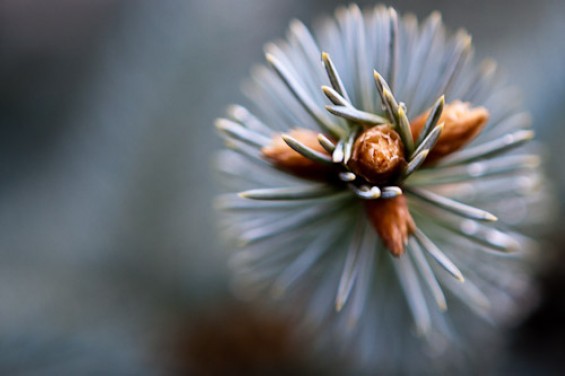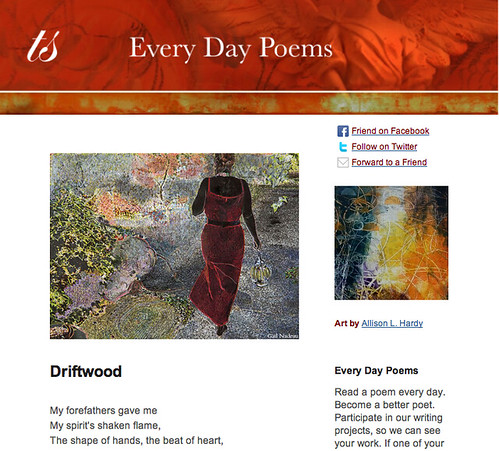It has been said that poetry is the un-sayable said. But this isn’t true. There are occasions in human experience when even poetry, the most potent form of language we humans have, cannot invent the words necessary to convey the unspeakable truth.
We have witnessed such an occasion in recent days. The shooting at Sandy Hook Elementary School on December 14th stunned us, once again, with an inexplicable act of violence and evil. In the immediate hours afterwards, the most common response I heard in the news and on social media was a paralyzed silence.
“No words, ” wrote one of my most eloquent and voluble Facebook friends.
But people wanted to say something, to offer some expression of the terrible loss of life, the terrible violation of the sacrosanct holy land of childhood, the terrible knowledge that evil can pierce us to the quick and leave us wounded, naked, and lost. We wanted to console ourselves, to insist that goodness & love triumphs over malignity & hatred. In the absence of words, people began circulating images—beautiful, powerful images of grief-stricken Madonnas, of weeping Christs, innumerable incarnations of the fragile human form contracted and contorted, tongue-tied in an agony of grief.
A Story
When our son turned five, we decided to give him a pair of hamsters. On his birthday—a cold and snowy day in early January—I picked him up from morning kindergarten, drove slowly home, and led him by the hand into our warm house. Waiting inside were balloons, cake, and a multi-level miniature plastic playground with two hamsters inside. My husband and I stood by, anticipating his response of surprise, wonder, and delight. Instead, our five-year-old child peered inside the cage, burst into hot tears, and began wailing inconsolably, “I want to BE one!”
We were mystified—both in that inexplicable moment and for years afterward.
One day, while I was reading the letters of poet John Keats, I received some small insight into this mystery. The young Keats would invest himself so entirely in the books he was reading (and in the lives he was living) he would become one with the creatures and emotions he encountered. Reading Spenser, he would hunker over and extend his arms in imitation of the “sea-shouldering whales” the master poet wrote of—watching the birds outside his window, he would imagine himself scratching and pecking in the gravel alongside them.
This “negative capability” Keats so prized — the impulse to negate The Self and become The Other, to inhabit a state of being perceived outside oneself—had overwhelmed our small son when he first set eyes on his hamsters, amazing little beings he had never seen before. Pierced by their beauty, his capacity to become them was outstripped by his desire, his five impassioned, puzzling words proclaiming the power and lamenting the limits of his imagination.
Why Haiku?
“It’s like being alive twice.”
This is what Basho, the 17th century haiku master, once said about lyric poetry. He left behind his life as a samurai warrior in order to become a poet, setting aside his sword to take up his pen, abandoning the pursuit of death to pursue life.
In the cicada’s cry
There’s no sign that can foretell
How soon it must die.
To know a state is to know its opposite, and haiku invites poet and reader to experience both in the same instant of time with an intensity telegraphed by its brevity. And so the poem, like the sound of the cicada (most evanescent of creatures), celebrates life and heralds death. Here is the in-between space, the negatively capable niche, where Basho takes up residence and writes from.
Haiku forbids excess. The poet has 17 syllables (or fewer) in which to say, not the un-sayable, but what can be said. There is no room for explanation, only impression. Haiku gives the fleet glimpse instead of exposition, a quick picture in place of a thousand words.
Won’t you come and see
loneliness? Just one leaf
from the kiri tree.
The sparseness of haiku suits its subject—the finding of plenty in the midst of dearth, of presence in the empty fact of absence, of affirmation amid the cry of lamentation.
For a lovely bowl
Let us arrange these flowers
Since there is no rice.
And what are “these flowers” that substitute for food if not words—bright blooms we cannot eat, that won’t sate our human hunger, yet feed the ear and eye? And what are haiku but small bowls of roses offered on the altar of our mortality, momentary flashes of Being that enlarge and amplify our own?
Lightning—
Heron’s cry
Stabs the darkness.
And so Basho wields his pen, a scalpel instead of a sword—his wounding delicate, surgical, survivable. Pierced by beauty, alive once and alive twice, we become more fully ourselves…heron and leaf, hamster and human, grieving mother and grieved-for child.
Photo by vaRiax, Creative Commons license via Flickr. Post by Angela Alaimo O’Donnell, author of Saint Sinatra and Other Poems.
__________________________
Buy a year of Every Day Poems, just $2.99 — Read a poem a day, become a better poet. In December we’re exploring the theme Haiku.
- Re-Inventing the Ode - March 19, 2014
- Poetry: Mirroring the Unseen - June 26, 2013
- Haiku: Pierced by Beauty - December 19, 2012


Maureen Doallas says
Lovely post, Angela, with beautiful examples of haiku. I could read Basho all day and never tire of him.
In the sky, snowflakes—
How quickly fingers to lips
Silence cold tongues.
Angela Alaimo O'Donnell says
Thank you, Maureen!
I love the ideas of reading Basho all day . . . like eating one Bowl of Roses after another.
Christopher Patchel says
Yes, very nice post, Angela. I also enjoyed my introduction to your work (as humbling as it was).
Angela Alaimo O'Donnell says
Thank you, Christopher, for your gracious words. Coming from a Haiku lover such as yourself, they mean a great deal!
Christine says
This is beautiful and moving, Angela. Thank you for posting and sharing it! Happy New Year!
Angela Alaimo O'Donnell says
Happy New Year to you, Christine! Thank you for taking the time to read–and to post these Good Words. I’m pleased and honored you enjoyed the piece.
Ken Chawkin says
Lovely post, Angela! I never fully understood Keats’ “negative capability” until I read your clear explanation of it. Thank you. I remember reading what one writing facilitator described as “reverse seeing,” which sounds similar. I was lucky to have had such an experience once, not knowing that’s what it was at the time.
Around 30 years ago, a friend and I drove out to the countryside and ended up at Round Prairie Park. There had been a drought that summer and in a pond stood many large lotus pads. My friend, an artist, took out her sketchbook and started drawing them. I asked for a piece of paper and tried to write a poem about them, but it was nothing worth mentioning.
We had both read “The Secret Life of Plants” and talked about the lotuses and their sensitivity. She resumed sketching, and I tried writing again. Nothing notable. I didn’t realize it, but I was warming up by pre-writing.
At one point I wondered what the lotus pads were feeling about us looking at them. All of a sudden my mind took on a different, heightened perspective. The words came and I quickly wrote them down. When it was over, I looked down at a poem on the page! It was as if it was dictated to me. At that point a bird “blessed” my hand from the tree above me. Nature’s confirmation!
I had later read in The Fairfield Ledger that Sparrowgrass Poetry Forum had put out a call for poems, so I sent it in to their competition. Much to my surprise the poem won an award!
You can read, “Ode to the Artist: Sketching Sketching Lotus Pads at Round Prairie Park” on my blog: https://theuncarvedblog.com/2011/01/16/ode-to-the-artist-a-magical-day-looking-at-lotus-pads/.
I also mention another poem that later came out of that experience. The editor had wanted me to submit a poem for their next publication so I wrote about how some poems come to be written. It was sort of a commentary on the first one. You can read “Sometimes Poetry Happens” on my blog: https://theuncarvedblog.com/2011/01/16/sometimes-poetry-happens-a-poem-about-the-mystery-of-creativity/.
I never planned to write this little epistle, but kept expanding and refining it to get it to this stage. Thank you tweetspeak for this opportunity to share this story about some of my early poetry!